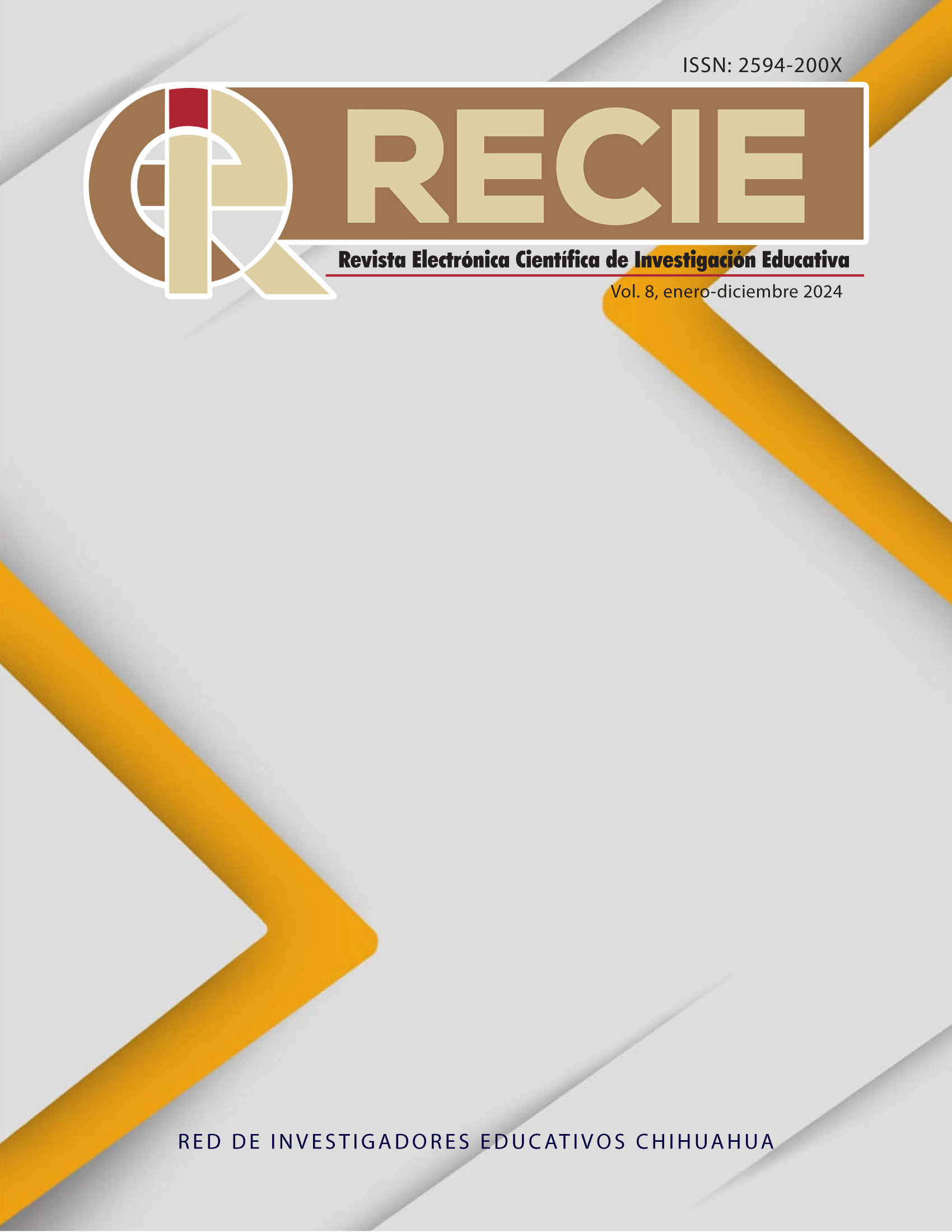Deepfake pornography in the AI era: New challenges for gender, humanistic and technological education
Published 2024-12-20
Keywords
- Educación de género,
- educación humanista,
- educación tecnológica,
- inteligencia artificial,
- violencia de género
- Gender education,
- humanistic education,
- technological education,
- artificial intelligence,
- gender-based violence
How to Cite
Copyright (c) 2024

This work is licensed under a Creative Commons Attribution-NonCommercial 4.0 International License.
Abstract
The proliferation of deepfakes, particularly in the form of pornography, emerges as a growing threat in contemporary digital society, exacerbating gender-based violence and posing significant challenges for online education and safety. This qualitative study focused on investigating the current state of research on deepfake pornography and its educational impact, using the content analysis method with the thematic analysis technique. The results revealed a worrying increase in the production of this type of manipulated content, with a disproportionate impact on women. The urgent need to strengthen legislation, promote digital literacy and encourage critical thinking in the educational field to mitigate the negative effects of deepfakes was highlighted. It was concluded that addressing cyberviolence against women requires comprehensive and collaborative responses, including the development of effective strategies and the identification of future research areas to protect human rights in the digital environment. This analysis highlights the importance of moving towards a safer and more ethical digital society, in which education plays a crucial role in preparing individuals to interact responsibly and critically with emerging technology.
References
- Acevedo, M. H. (2011). El proceso de codificación en investigación cualitativa. Contribuciones a las Ciencias Sociales, (12). https://www.eumed.net/rev/cccss/12/mha2.htm
- Atlas.ti (s.f.). Obtenga una ventaja y potencie su investigación con conocimientos críticos. https://atlasti.com/es/investigadores-cientificos
- Bañuelos C., J. (2022). Evolución del Deepfake: campos semánticos y géneros discursivos (2017-2021). Icono 14, Revista de Comunicación y Tecnologías Emergentes, 20(1), 1-21. https://dialnet.unirioja.es/servlet/articulo?codigo=8560688
- Bigas F., N. (2023, nov. 2). ‘Deepfakes’ pornográficos: cuando la IA desnuda tu intimidad y vulnera tus derechos. Universidad Oberta de Cataluña. https://www.uoc.edu/es/news/2023/265-deepfakes-pornograficos-cuando-IA-desnuda-tu-intimidad-vulnera-tus-derechos
- Corral, M. M. (2020, may. 11). La codificación en la investigación cualitativa. https://www.metodos.work/2020/05/11/la-codificacion-en-la-investigacion-cualitativa/#:~:text=codificaci%C3%B3n%20genera%20m%C3%A1s%20familiaridad%20con%20los%20contenidos%20y%20permite%20iniciar
- De Angeli, A., Falduti, M., Menendez, M., y Tessaris, S. (2021). Reporting revenge porn: A preliminary expert analysis. CHItaly ‘21: Proceedings of the 14th Biannual Conference of the Italian SIGCHI Chapter, 30, 1-5. https://doi.org/10.1145/3464385.3464739
- Fitzgerald, M. (2024, abr. 10). States race to restrict deepfake porn as it becomes easier to create. Stateline. https://stateline.org/2024/04/10/states-race-to-restrict-deepfake-porn-as-it-becomes-easier-to-create/#:~:text=In%202023%2C%20pornography%20made%20up%2098%25%20of%20all%20deepfake%20videos%20online
- García-Ull, F. J. (2021). Deepfakes: el próximo reto en la detección de noticias falsas. Anàlisi: Quaderns de Comunicació i Cultura, (64), 103-120. https://doi.org/10.5565/rev/analisi.3378
- Gosse, C., y Burkell, J. (2020). Politics and porn: How news media characterizes problems presented by deepfakes. Critical Studies in Media Communication, 37(5), 497-511. https://doi.org/10.1080/15295036.2020.1832697
- INEGI [Instituto Nacional de Estadística y Geografía] (2023, jul. 13). Módulo sobre ciberacoso. Comunicado de prensa Núm. 404/23. https://www.inegi.org.mx/contenidos/saladeprensa/aproposito/2023/cp404_23.pdf
- Jang, S. M., y Kim, J. K. (2018). Third person effects of fake news: Fake news regulation and media literacy interventions. Computers in Human Behavior, 80, 295-302 https://www.researchgate.net/publication/321239042_Third_person_effects_of_fake_news_Fake_news_regulation_and_media_literacy_interventions
- Karasavva, V., y Noorbhai, A. (2021). The real threat of deepfake pornography: A review of Canadian policy. Cyberpsychology, Behavior, and Social Networking, 24(3). https://doi.org/10.1089/cyber.2020.0272
- Kerner, C., y Risse, M. (2021). Beyond porn and discreditation: Epistemic promises and perils of deepfake technology in digital lifeworlds. Moral Philosophy and Politics, 8(1), 81-108. https://doi.org/10.1515/mopp-2020-0024
- Maddocks, S. (2020). ‘A deepfake porn plot intended to silence me’: Exploring continuities between pornographic and ‘political’ deep fakes. Porn Studies, 7(4), 415-423. https://doi.org/10.1080/23268743.2020.1757499
- Mania, K. (2024). Legal protection of revenge and deepfake porn victims in the European Union: Findings from a comparative legal study. Trauma, Violence, & Abuse, 25(1), 117-129. https://doi.org/10.1177/15248380221143772
- Maras, M.-H. y Alexandrou, A. (2018). Determining authenticity of video evidence in the age of artificial intelligence and in the wake of Deepfake videos. The International Journal of Evidence & Proof, 23(3), 255-262. https://doi.org/10.1177/1365712718807226
- Niebla, J. (2019). Ciberseguridad y derecho: hacia la adopción de un enfoque inteligente para la aplicación de la ley en entornos digitales. Aequitas Revista cuatrimestral del Poder Judicial del Estado de Sinaloa, 21(8), 41-57. https://www.academia.edu/45136125/Ciberseguridad_Niebla_Zatarain_2021
- Nugraha, U. A., Kesuma, P. T., y Hidayat, R. M. (2023). Analisis hukum terhadap upaya pencegahan kasus deepfake porn dan pendidikan kesadaran publik di lingkungan digital. Jurnal Penelitian Hukum, 7(3). https://doi.org/10.31004/jptam.v7i3.10815
- Rössler, A., Cozzolino, D., Verdoliva, L., Riess, C., Thies, J., y Nießner, M. (2018). FaceForensics: A large-scale video dataset for forgery detection in human faces. arXiv, 1803.09179. https://doi.org/10.48550/arXiv.1803.09179
- Timmerman, B., Mehta, P., Deb, P., Gallagher, K., Dolan-Gavitt, B., Garg, S. y Greenstadt, R. (2023). Studying the online deepfake community. Journal of Online Trust & Safety, 2(1). https://doi.org/10.54501/jots.v2i1.126
- Vega, E. (2023). Tipología de la codificación en el análisis cualitativo. Medium. https://medium.com/@envervega/tipolog%C3%ADa-de-la-codificaci%C3%B3n-en-el-an%C3%A1lisis-cualitativo-a58a75cbf7f6#:~:text=Codificaci%C3%B3n%20axial%3A%20La%20codificaci%C3%B3n%20axial%20implica%20la%20identificaci%C3%B3n%20de%20relaciones%20y%20conexiones%20entre%20las%20categor%C3%ADas%20o%20c%C3%B3digos
- Yessica con “Y” y Desde Mujeres (2023, jul. 31). Deepfake y nuevas formas de violencia digital contra las mujeres. Zona Docs. Periodismo en Resistencia. https://www.zonadocs.mx/2023/07/31/deepfake-y-nuevas-formas-de-violencia-digital-contra-las-mujeres/


